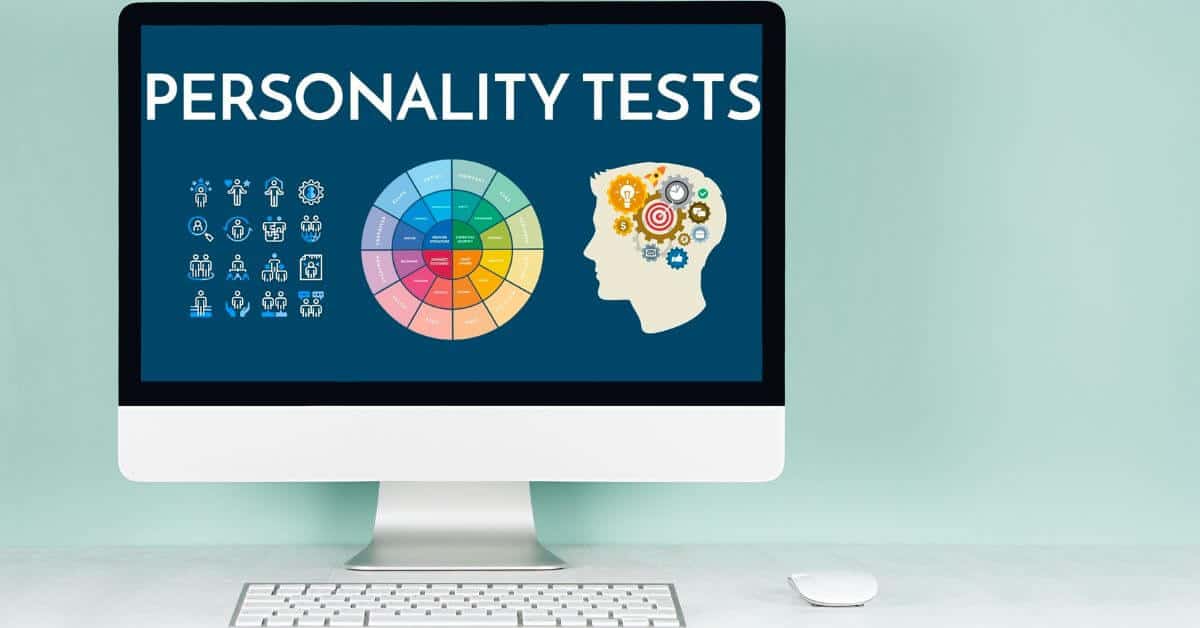Everyone loves to take online personality tests. They’re one of the few things that have been around for a while and have never really lost their magic or their pull.
Even though there seems to be a never-ending supply of personality tests and just as many reasons to take one test over another, it’s good to note that all these examinations help you to gain a deeper insight into your feelings, how you perceive the world, and how you and your partner can better understand each other.
Yes, there are a lot of tests; they’re also some of the most helpful tools a person has at their disposal, and usually for free. You might think you know yourself and your partner, yet the most popular and insightful tests out there are sure to open even the most self-aware person’s eyes.
If you’re wondering what kind of personality tests we’re talking about and how each test can help you and your relationship grow, keep reading.
The Enneagram Personality Test
The Enneagram is my personal favorite personality test right now. People can use the Enneagram in their everyday lives, usually being able to assign certain personality traits that coincide with certain Enneagram personalities.
The Enneagram test can be taken on multiple websites and will help you determine which of the nine core personality types you belong to. Each personality is numbered, one through nine, and their position on the Enneagram represents how the numbers interact and take on different forms depending on the situation.
It makes sense once you get the hang of it. Just like people, no one type is exactly the same. Someone might identify with a specific number, but they will also have their own variation and interpretation of that type and how it affects their lives.
The nine different Enneagram types are:
- One – The Perfectionist
- Two – The Helper
- Three – The Achiever
- Four – The Individualist
- Five – The Investigator
- Six – The Loyalist
- Seven – The Enthusiast
- Eight – The Challenger
- Nine – The Peacemaker
The Enneagram also has variations of each number that come from their wings. No matter what Enneagram number you are and what traits come with that number, you also identify with a specific wing, one of the numbers next to your core personality type, which will affect how your kind acts in the world.
Although the Enneagram is not new, many people are discovering it for the first time and learning more about themselves by exploring this complex interconnection of personalities and their wings.
One of the reasons we recommend that couples take this test together and learn each other’s results simultaneously is because there is so much information and knowledge that can be gleaned from the results.
There are countless studies, podcasts, books, and more surrounding each Enneagram type, how they interact with one another, what the best pairings are, and how the Enneagram can help individuals as a whole.
If you want to do a deep dive into your soul and the things that make you tick, you and your partner should look into taking the Enneagram test.
The Myers-Briggs Type Indicator Personality Test
The Myers-Briggs test, or the 16 Personalities test, is one of the most popular personality tests and is used prominently in workplaces and for personal growth and exploration.
The test is made up of eight different letters, all of which can make up the 16 different personality types that a person can identify with.
The Myers-Briggs test shows the bare bones of a person, what matters to them, and how they interact with the world around them.
The MBTI’s results will show what kind of characteristics a participant gravitates towards and assigns them a series of four letters in various combinations that make up 16 unique personalities.
The letters and basic personality types that people are assigned are:
- introvert (I) or extrovert (E)
- sensing (S) or intuition (N)
- thinking (T) or feeling (F)
- judging (J) or perceiving (P)
The 16 Myers-Briggs Personality Types are as follows:
- ISTJ – The Inspector
- ISTP – The Crafter
- ISFJ – The Protector
- ISFP – The Artist
- INFJ – The Advocate
- INFP – The Mediator
- INTJ – The Architect
- INTP – The Thinker
- ESTP – The Persuader
- ESTJ – The Director
- ESFP – The Performer
- ESFJ – The Caregiver
- ENFP – The Champion
- ENFJ – The Giver
- ENTP – The Debater
- ENTJ – The Commander
One of the reasons why so many people embrace the Myers-Briggs philosophy is because it shows how a person interacts with the world and the people around them. The test lets you and your partner better understand how you see the world and what matters to you when you’re going about your day.
This test is quick and convenient to complete while providing in-depth knowledge regarding one’s primary motivations and ways of interacting with the world, including their natural tendencies, strengths, and weaknesses.
It’s invaluable information for couples and people who want to know more about themselves before trying to find a significant other.
The Five Love Languages
Everyone wants to be loved. In general, being loved by someone is most people’s goal when they’re looking for a relationship or moving through life. The love doesn’t necessarily have to be romantic, either. Many people want to be loved in platonic ways.
But one thing that makes giving and receiving love difficult is that, while love is a universal language, there are multiple ways that people show love and just as many ways they want to receive it.
This is when the Five Love Languages test comes in handy. The five love languages were made by a man named Gary Chapman. While the man is a Christian and the test is somewhat rooted in Christianity, people who are not believers can take this test, and their religious beliefs won’t matter or get in the way of their results.
One of the reasons we love the Five Love Languages test, and think every couple should take it, is that everyone wants to be loved differently, and it’s not always apparent how exactly to speak someone’s love language.
The Five Love Languages consist of words of affirmation, gift-giving, acts of service, quality time, and physical touch.
You might think that one of these sticks out to you the most and that you identify with it more than the others, but we recommend you take the test because the answers might surprise you.
While all of the love languages are great, and you can’t really go wrong trying to infuse them all into your daily relationship practices, you and your partner need to know each other’s primary love language so that you can show affection and appreciation in a way that’ll mean the most to them.
You must know how to best honor and love your partner to create a healthy and supportive relationship.
The Six Human Needs Personality Test
If this is the first time you’ve heard of the Six Human Needs Test, don’t worry, it’s not the most popular one on the list. But that doesn’t mean it’s not as valuable as the others.
This test was created by a woman named Cloé Mandanes to better understand her students and for them to understand themselves. She assembled a questionnaire that allowed her students to discover which of the six basic human needs they required most.
She based this test on Sigmund Freud’s studies, as he was the one who proposed the six basic human needs. These needs are not survival based, but instead, they go a bit deeper and explore what a person feels as though they need to feel secure and happy in their lives.
Often, especially when you’re in a relationship with someone, and you’re doing day-to-day things all of the time, your needs are being met, and you don’t even realize it. While that’s good, and you would hope that your relationship is meeting your needs, it’s also wise to explore what you need in order to feel good and secure in your life.
The needs are love and connection, variety, significance, certainty, growth, and contribution. The first four needs are more of a necessity to survive and get through life, while the last two are more about contributing to a fulfilling existence.
Once you realize your primary need, you and your partner can keep those necessities in mind and at the forefront of your priorities.
Where Do We Go from Here?
Now that you know some of the most impactful and informative personality tests available, the question remains — where do you go from here?
Our best guess is to take some time with your partner when both of you take these tests, get the results, and think about how the outcomes will apply to your lives and relationship.
We’re not suggesting you completely restructure your relationship after these tests, but it might be worth exploring the results and using them to better serve your partner’s needs and desires. If they do the same for you, you’ll be off to a swell start!




